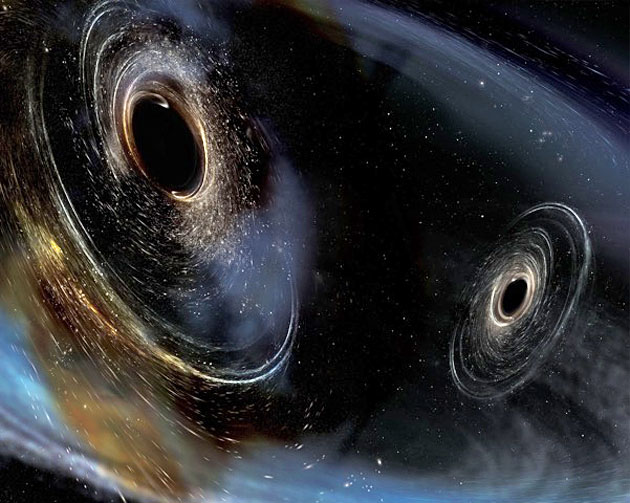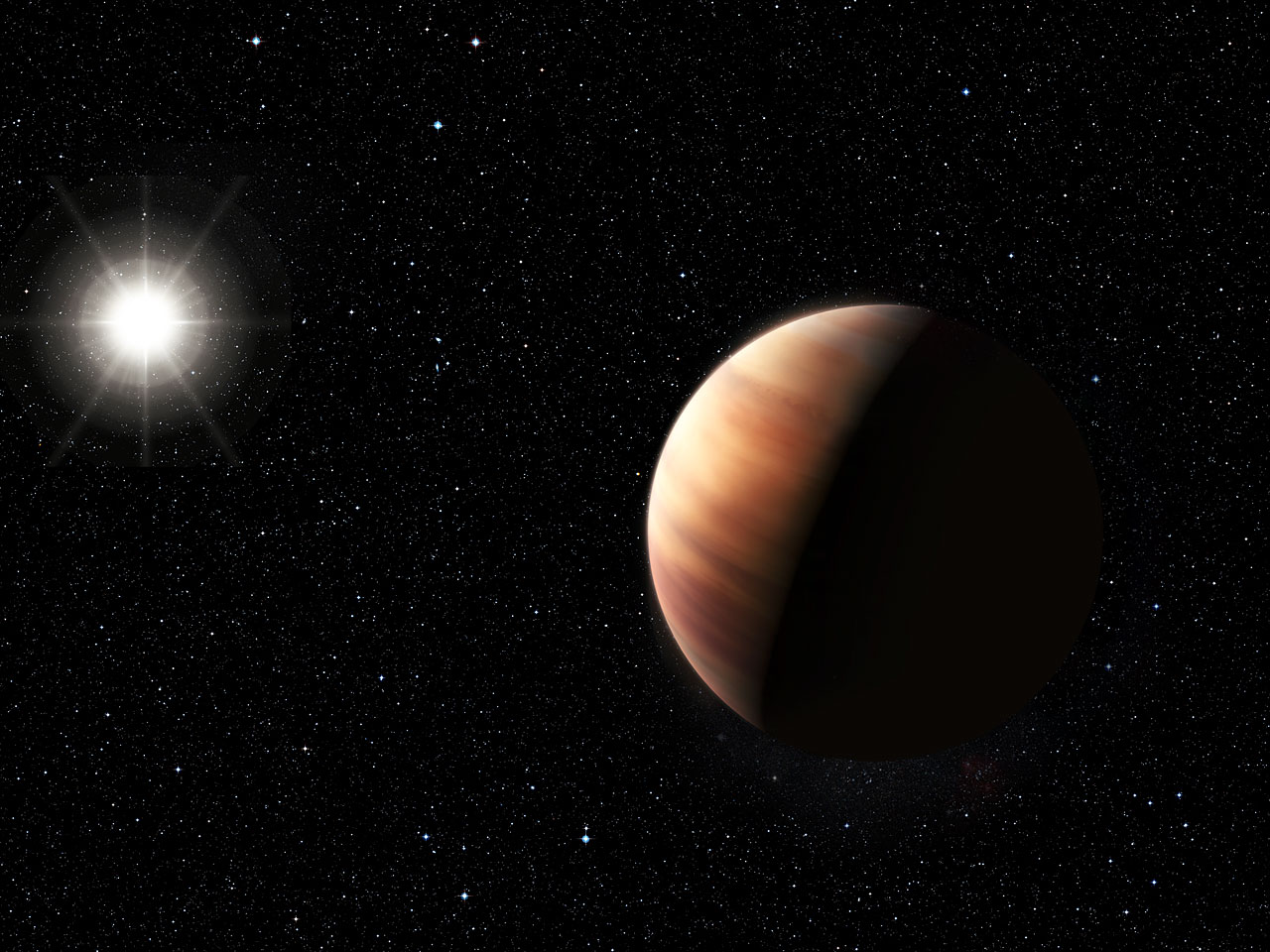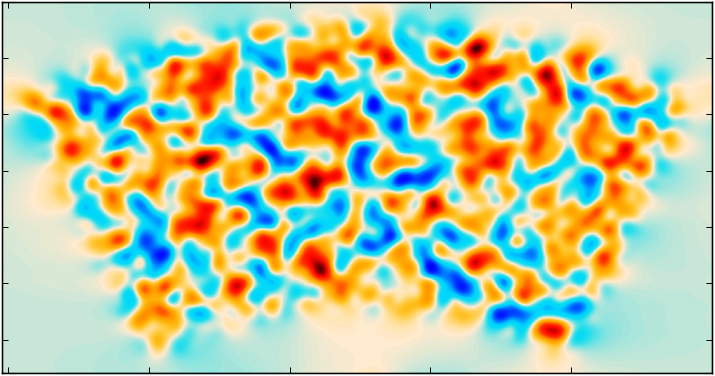 |
 |
 |
 |
 |
 |
 |
 |
 |
 |
 |
 |
|
Talks & Events
|
Ph.D. Thesis Defenses: 2017
Multi-messenger Astronomy with Advanced LIGO-Virgo "Hsin-Yu's work is helping set the stage for the new era of gravitational-wave astronomy. She has played an active role within the LIGO collaboration in the analysis of our first detections, while also becoming a leader in the field of multi-messenger astronomy." - Daniel E. Holz, PhD advisor Thesis Abstract: My thesis is focused on gravitational wave multi-messenger astronomy. The most promising sources for current gravitational wave detectors are compact binary mergers, including the mergers of stellar mass binary black holes, binary neutron stars, and neutron star-black hole system. I investigated the detection rate of binary neutron star and neutron star-black hole mergers from observations of their potential electromagnetic emission. To facilitate the search for the electromagnetic counterparts and the host galaxies of compact binaries, I developed a rapid algorithm that reconstructs the sky direction and luminosity distance of binary mergers from their gravitational wave signals, and predicted the existence of well-localized events. In addition, I carried out a thorough study of how gravitational-wave observational selection effects influence electromagnetic follow-up. In summary, I explored how to measure astrophysical and cosmological parameters with gravitational wave detections, and facilitated gravitational wave-electromagnetic follow-up through various approaches, paving the way for the future of gravitational wave astrophysics and cosmology. Illuminating the Origins of Planets with Solar Twins Ph.D. Committee members: Jacob Bean (PhD advisor), Daniel Fabrycky, Mike Gladders, Fred Ciesla, and Al Harper "Megan's work has dramatically advanced the state-of-the-art for using stellar abundances to understand the formation and diversity of planets. In particular, her remarkable discovery of the chemical homogeneity of Sun-like stars has implications for the compositions of rocky planets beyond our solar system and their suitability for life. Megan also led the observations and analyses for an international exoplanet search program that has already resulted in the discovery of multiple planets." - Jacob L. Bean, Ph.D. advisor Thesis Abstract: The compositions of planet-hosting stars may contain vital clues to how their planets formed and what they are made of. However, the challenge of resolving planet-scale abundance differences in the vast photospheres of stars requires a unique approach. In my thesis, I present the results of a five-year-long radial velocity planet search and a companion survey of detailed stellar abundances for 80 solar twin stars. As I will demonstrate, solar twins' chemical compositions can be spectroscopically measured at an unparalleled level of detail. My thesis pairs these precise stellar abundances with information about the stars' planetary systems to give new insights into the connection between stars and their planets. The results of my work shed light on the chemical evolution of stars in the solar neighborhood, the diversity of their planetary systems, and the unusual characteristics of our own Sun. Detecting and Interpreting the Dynamical Evolution of Transiting Multiplanet Systems Ph.D. Committee members: Jacob Bean, Fred Ciesla, Fausto Cattaneo "Mills' thesis is a tour-de-force of planetary dynamics. Using data from NASA's Kepler mission, Mills explored sub-Neptunes in resonant orbits, Mars-mass planets in dynamically packed orbits, and gas giants torquing each other's orbits. To top it off, Mills has interpreted statistical trends in their orbits and their atmospheres that point to planetary evolution from their formation to today." - Daniel Fabrycky, Ph.D. advisor Thesis Abstract: The dynamical interactions of our Solar System have been studied in depth since Isaac Newton recognized that the planets may not be stable to each other's gravitational perturbations. Recently, the discovery of exoplanet systems, including approximately a thousand planet candidates in systems of more than two bodies, has opened an extremely vast and diverse laboratory for planetary dynamics. In this dissertation, I describe techniques for measuring the dynamical, post-Keplerian interactions of planetary systems. Such signals often require numerical N-body analysis and photodynamic techniques combined with Bayesian statistics to correctly determine the properties of the planetary systems causing them. By simultaneously fitting the entire lightcurve data set at once, I am able to extract low signal-to-noise effects such as the resonance dynamics of a very faint system (Kepler-223), the slow orbital precession of a giant planet system (Kepler-108), and transit timing variations among very small and low mass planets (Kepler-444). I use these analyses to gain physical insight into the system's history, such as Kepler-108's potentially chaotic, violent past. Kepler-223's present structure indicates a migration origin for at least some close-in, sub-Neptune planets, which I explore in terms of tidal dissipation, smooth and stochastic migration, and secular evolution. I also analyze circumbinary systems including the newly discovered KIC 10753734. Taken together, these results provide insight into planetary formation in a broad array of environments for planet from compact sub-Neptune systems to Jupiters and circumbinary planets. On the Population II Distance Scale: The Tip of the Red Giant Branch Distances to Local Galaxies Ph.D. Committee members: Richard Kron (PhD Advisor), Michael Gladders, Stephen Kent, Daniel Fabrycky "Currently there is a tension in values of the Hubble constant as measured in the local universe compared with estimates from the cosmic microwave background. Dylan Hatt's thesis uses an alternative method to classical Cepheids for measuring the local distance scale, a technique that holds promise for resolving the current disagreement.." - Wendy L. Freedman, Ph.D. advisor "Dylan's thesis work explores a technique for measuring distances to galaxies that is independent of the Cepheid distance scale. The thesis work involved new measurements of many thousands of giant-branch stars in several Local Group galaxies. Ultimately the project will help refine the distance scale and the value of the Hubble constant." - Richard G. Kron, Ph.D. advisor Thesis Abstract: The difference between direct and indirect measures of H0, i.e. via SNe Ia distances anchored by Cepheids and via modeling of the Cosmic Microwave Background, stands at an average > 3σ. This tension has motivated a second look at the calibration of the extragalactic distance scale. Population II stars have gained favor as an independent calibrator for SNe Ia, bypassing the possible systematics associated with the traditional Cepheid-based distance scale. I will present high-fidelity distances to five local galaxies -- IC 1613, NGC 4424, NGC 4526, NGC 4536, and NGC 1365 -- using the Tip of the Red Giant Branch, which is a prominent observable that is defined by well-understood stellar astrophysics. I will further compare these results with existing Cepheid-based distances and demonstrate that there is good correspondence between distances derived from stars of Population I and II. Measuring the cosmic microwave background gravitational lensing potential and its power spectrum with SPTpol Ph.D. Committee members: Scott Dodelson, Brad Benson, Abigail Vieregg. "Monica has make many important contributions to the analysis of South Pole Telescope CMB data. For her thesis she has used SPTpol temperature and polarization data to produce the most sensitive CMB lensing reconstruction of the mass distribution in the universe, paving the wave for SPT-BICEP B-mode delensing and other cosmological analysis." - John Carlstrom, Ph.D. advisor Thesis Abstract: Weak gravitational lensing by large-scale structure in the universe causes deflections in the paths of cosmic microwave background (CMB) photons. This effect introduces non-Gaussian correlations in the observed CMB temperature and polarization fields. The signature of lensing can be used to reconstruct the projected gravitational lensing potential with a quadratic estimator technique; this provides a measure of the integrated mass distribution out to the surface of last scattering. The power spectrum of the lensing potential encodes information about the geometry of the universe and the growth of structure and can be used to place constraints on the sum of neutrino masses and dark energy. High signal-to-noise mass maps from CMB lensing are also powerful for cross-correlating with other tracers of large-scale structure and for delensing the CMB in search for primordial gravitational waves. In my thesis, I describe a measurement of the CMB gravitational lensing potential and its power spectrum using data from 500 square degrees of sky observed with the polarization-sensitive receiver installed on the South Pole Telescope, SPTpol. Unveiling the early Universe: delensing the Cosmic Microwave Background with galaxy surveys Ph.D. Committee members: Scott Dodelson (Ph.D. advisor), Wayne Hu, Richard G. Kron, Abigail G. Vieregg "Alessandro led the team that carried out the first 'de-lensing' of the polarization in the cosmic microwave background. Using data from the South Pole Telescope, the team used software to undo what billions of years of propagation through the clumpy universe has done: distorted the pattern of polarization. This first demonstration is the harbinger of what will ultimately become an essential tool in analyses of future SPT CMB-Stage 4 data." - Scott Dodelson, Ph.D. advisor Measurements of Morphology in Strongly Lensed Galaxies in the Image Plane "Michael has been working at the interface of simulations and observations to develop statistical methods to quantify the morphology of strongly lensed galaxies, in the image plane. Such techniques bypass the extensive effort (both in analysis, and additional data) required to model strong lensing systems and generate source plane images. His work in particular sets a standard for upcoming space missions such as JWST, Euclid and WFIRST; he will be leaving us to go to take a NASA Postdoctoral Fellowship working the JWST group at Goddard Space Flight Center." - Michael Gladders, Ph.D. advisor |






